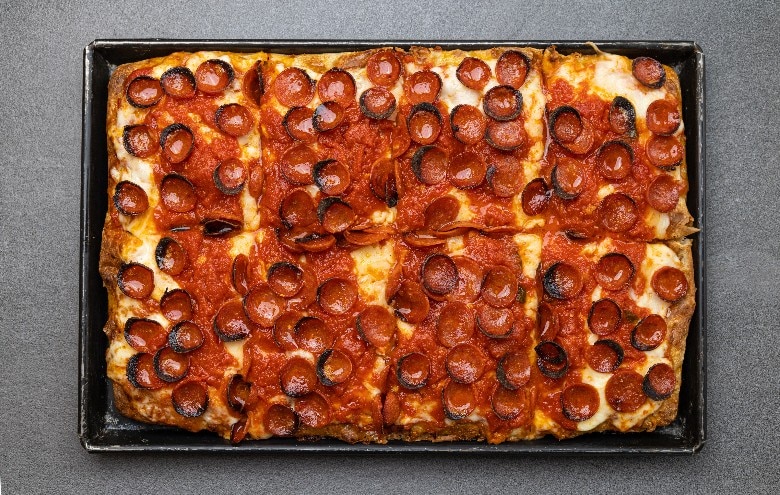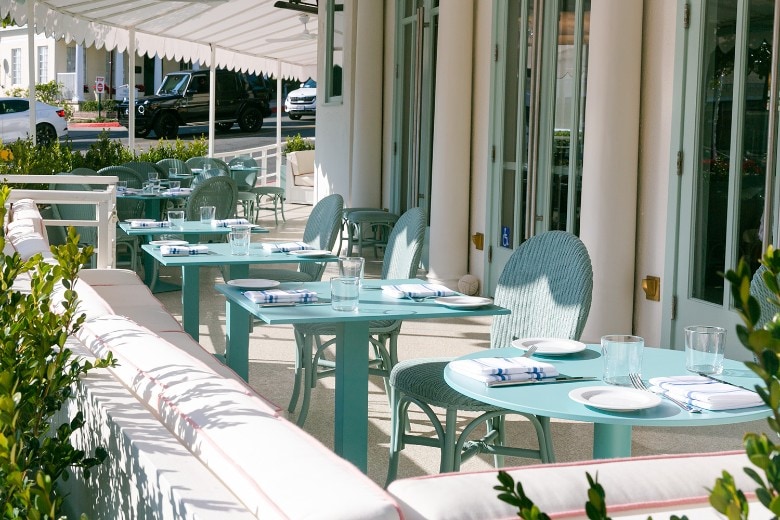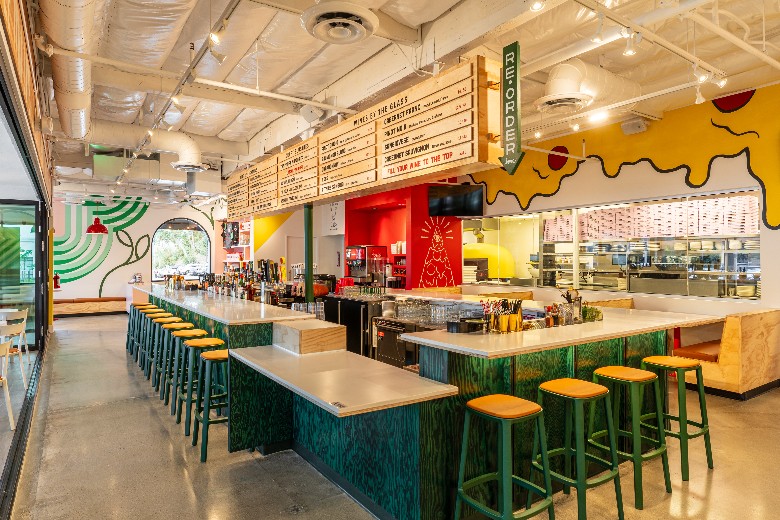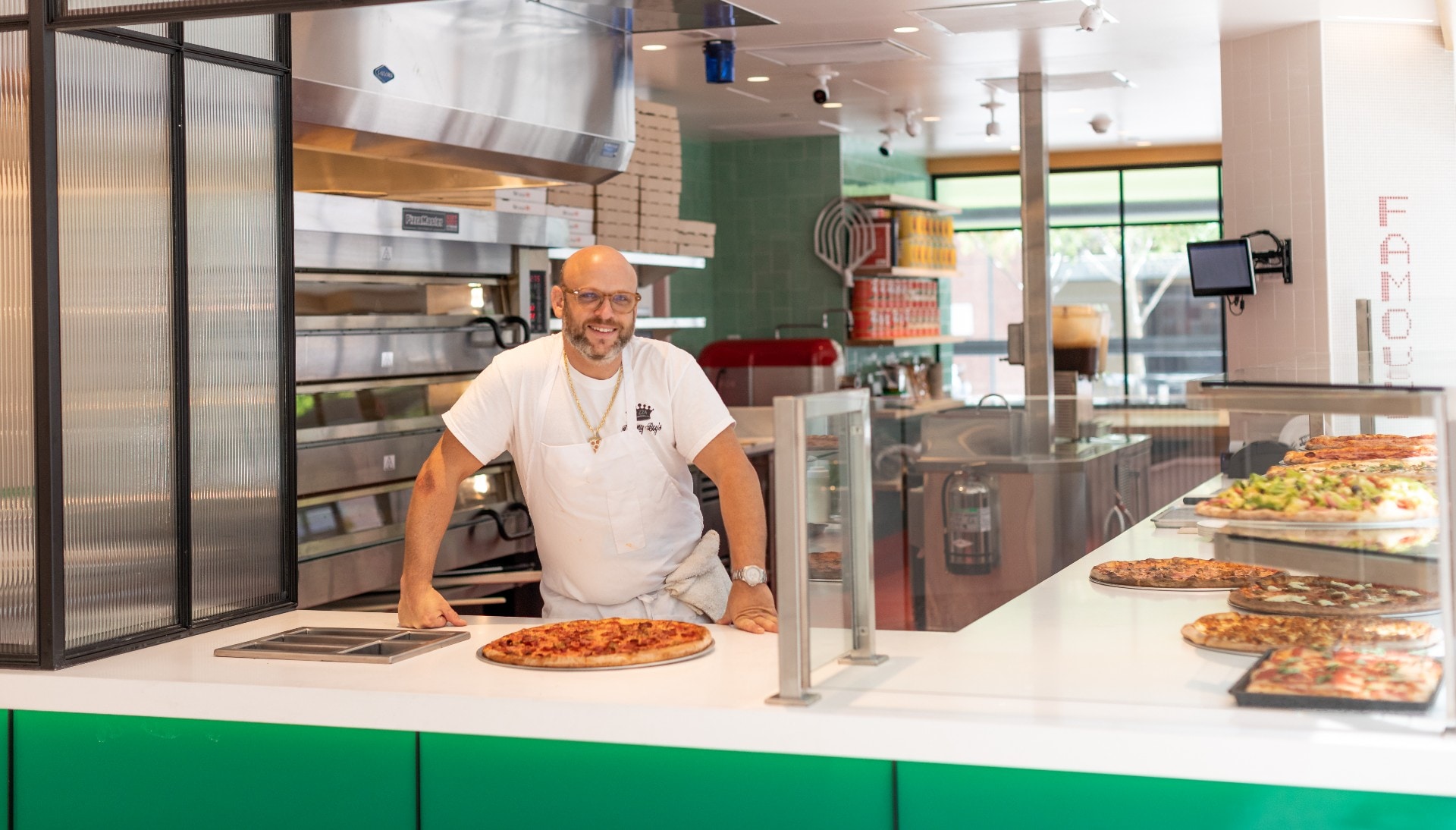While expansion isn’t always the right step for every restaurant, the ability to scale a successful dining concept can be a strong investment for business owners and chefs. Not only can it help build a chef or restaurateur's reputation within their home city or state (or even on the international stage), but it can also be a great way for backers and financial partners to see a quicker return on their investments.
However, expanding too quickly, or into the wrong market, can spell disaster for a new business. So how do restaurant owners manage when and where to expand, and how do they keep quality intact across new outposts? Three different restaurateurs weigh in on their restaurant location strategy.
What are the risks of opening a second restaurant?
Daniel Holzman, the chef and owner of Danny Boy’s Pizza in downtown Los Angeles, has been on both sides of the expansion coin. Holzman’s counter-style Danny Boy’s, a New York City-style concept, will expand to a second Los Angeles location in the summer of 2024. The original counter opened in the Halo DTLA food hall in 2021, so after three years, both Holzman’s team and the popularity of the quick, by-the-slice format has motivated his expansion. And though he feels it’s the right time for his restaurant to expand, he’s also the first to acknowledge the risk.
1. It could impact the reputation of your original location.
“If you’re in a position to open a new location, it means that your business is successful,” Holzman says. “So the biggest risk is not only does the new location fail, but also that it detracts from the current location and both of them suffer. We’ve seen so many examples of an amazing business that expands, and the whole thing crumbles. Either the quality fails, or the financial model doesn’t work, or they don’t have the discipline or ability to manage it. It’s a little bit of a house of cards.”
2. You could grow too fast.
As one of the co-founders and former owners of The Meatball Shop in New York City, Holzman has also seen expansion that didn’t go well. “When I ran that restaurant, we grew it to seven restaurants, and then I hired a CEO and he opened a few restaurants as well,” he remembers. “Some of the later expansions closed right away, and we had a couple of out-of-state expansion opportunities that were a challenge to find success.” This time around, Holzman, a native New Yorker, debuted his New York City pies and slices without an expansion plan behind this restaurant. Danny Boy's, as a concept, was more about his own personal enjoyment as a chef, and whether or not an eventual expansion was going to make sense for his team.

Danny Boy’s Pizza serves NYC-style pies in Los Angeles
3. You could lose sight of your “why.”
“A lot of times one of the stipulations when you take on outside funding is a growth plan,” Holzman says. “Which is how the private investors benefit from the long term investment. I really felt like it was important to open this restaurant without that pressure, especially because you never know what the experience is going to be like. Not even just for the restaurant’s success, but also, are you personally enjoying it? Is this something I’m going to be able to do more, to maintain my focus and discipline every day to show up and do the work? And is it good for the restaurant and good for the team? Those were my factors.”
How do you decide where to open a new restaurant?
Restaurateur and entrepreneur Kathy Sidell is the founder of Saltie Girl, a Boston, Massachusetts-based seafood restaurant that recently expanded to both Los Angeles and London back in 2022, though the London location shuttered in February 2024.
The expansion to other markets began to make sense after a solid six years on the East Coast. In the case of her Los Angeles location, which just celebrated its one-year anniversary, Sidell’s decision was motivated by both professional and personal reasons – as well as a gap in the market. But in the case of their London expansion, the timing just didn't work out.
"Our partners were ultimately the wrong fit and our team wasn’t onsite to operate the restaurant daily," Sidell says. "I think it was also a very difficult time in London – lots of issues hiring talent, strikes, and weather. Tinned fish is largely perceived as a survival food in London, not as a luxe experience, so translating the Saltie Girl concept was a challenge for us. Perhaps we were a year or two too soon. Timing is everything."
Not just that, but as Sidell mentioned above, having the right people – and the right relationships in place – is another huge factor.
1. Personal relationships can play a role.
“My children live in Los Angeles so that played heavily into opening Saltie Girl there,” Sidell explains. “But I also felt Los Angeles lacked the quality seafood experience that we offer, so there was a niche I hoped we could fill particularly in West Hollywood.” But the presence of her children in the area wasn’t a purely personal boon, either. Not only did Sidell’s own background in Los Angeles play a role in getting the word out about her new venture, but now she also works alongside her son Ben, who serves as the pastry chef at Saltie Girl’s West Coast outpost.

Saltie Girl's outdoor space at their Los Angeles location
2. Tap into your network for a built-in level of support.
“Los Angeles is a major food destination with an exceedingly discerning audience and extraordinary food journalism,” Sidell says. “I also have a wide network in L.A. from my past career in film and many, many people have come to the original Saltie Girl in Boston. I’m super blessed to have a wonderful group of Saltie ambassadors that spread the word – my Hollywood agent daughter, and my son, Ben Sidell, who is also our pastry chef and has been in L.A. since he went to the University of Southern California.”
“The most successful way to build a group of restaurants is to focus on one great restaurant at a time.” —Jeff Goodman, CEO, American Gonzo Food Corp.
How does a restaurant maintain quality across multiple locations?
Particularly because the margins in the restaurant world are incredibly thin and overhead costs are always rising, one of the most important parts of a restaurant’s development is economic stability within a single location. Finding new neighborhoods and regions to establish new outposts is also high on the agenda. The balance between locking in an authentic dining experience and turning that into a multi-location concept is one that Jeff Goodman, the CEO of American Gonzo Food Corp., a California-based restaurant group known for The Win-Dow, Pitfire Pizza, and Superba, is very familiar with.
1. Focus first on creating one great space – with an eye on the future.
In Goodman’s view, the best way to build a concept is to first create a singular unique space, then bring that same formula into additional outlets. “The most successful way to build a group of restaurants is to focus on one great restaurant at a time,” Goodman says. “Develop one magical space that’s compelling to guests with craveable food, cool design, great hospitality – and in certain ways the rest should take care of itself. However, I’ve found that it is also helpful to be conscious of your ambition for the next restaurant, so you aren’t making too many decisions that you have to correct at the second or third location.”

The Carlsbad, California location of Pitfire Pizza, part of American Gonzo Food Corp. restaurant group
2. Each new spot should have its own special element.
And as a restaurant moves from a single outlet into a set of multiple locations, Goodman notes that trying to offer the same magic in more than one place can have “diminishing returns.” To avoid feeling like a concept has been watered down, he suggests finding a special element that gives each new spot its own presence.
“Growing multiple restaurants of the same concept is generally additive,” he says. "Everything becomes a little more efficient, and your people power and the support that’s given to each of the restaurants is at a higher level. F&B [food and beverage] and smallwares [silverware, tabletop items, prep kitchen tools, etc.] pricing all seem to get better with each new restaurant. But it comes with potential pitfalls, and you have to be conscious that there can be diminishing returns. With each additional restaurant, they can become a little less special. The trick is to make sure that restaurant 10 is as special as restaurant two is as special as restaurant one.”
Photos from top: Courtesy of Danny Boy's Pizza, Mike Cotrone / courtesy of Saltie Girl, Kimberly Motos / courtesy of American Gonzo Food Corp.

